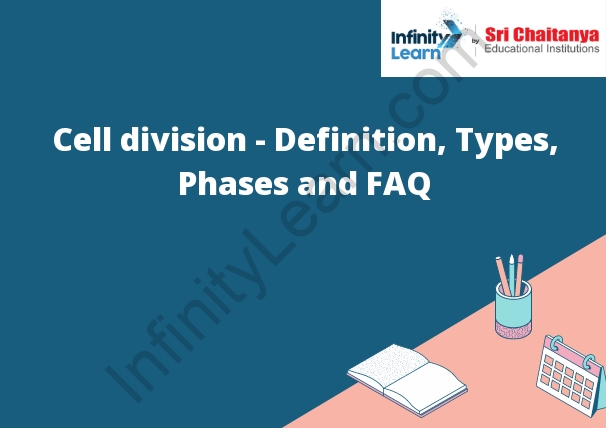Table of Contents
Cell division
Cell division – Definition: Cell division is the process by which a single cell divides into two daughter cells. It is a fundamental process of life, and is used by plants and animals to grow and to repair tissues.
There are two types of cell division: mitosis and meiosis. Mitosis is responsible for the growth and repair of tissues in plants and animals, while meiosis is responsible for the production of sperm and eggs.
- Mitosis is a process of cell division that results in two genetically identical daughter cells. It occurs in all plant and animal cells, and is used to grow and repair tissues. Mitosis is a process of nuclear division that results in two genetically identical daughter cells. It occurs in all plant and animal cells, and is used to grow and repair tissues. Mitosis can be divided into five phases: prophase, metaphase, anaphase, telophase, and cytokinesis.
- Prophase is the first phase of mitosis, and is marked by the condensation of the nuclear DNA into chromosomes. The chromosomes become visible as they coil up into chromatin.
- Metaphase is the second phase of mitosis, and is marked by the alignment of the chromosomes along the middle of the cell.
- Anaphase is the third phase of mitosis, and is marked by the separation of the chromatids of the chromosomes.
- Telophase is the fourth phase of mitosis, and is marked

What is Cell Division?
Cell division is the process by which a cell duplicates its genetic material and then splits into two daughter cells. The process is controlled by the cell’s DNA, which is duplicated during replication. The daughter cells will then each have the same genetic information as the original cell.
Cell Division- Mitosis and Meiosis
- Mitosis is a process of cell division in which the nucleus of a eukaryotic cell divides into two daughter nuclei. The process of mitosis is regulated by the mitotic spindle, a structure composed of microtubules that forms between the two separating nuclear masses. During mitosis, the chromosomes are duplicated and the sister chromatids are attached to the mitotic spindle. The spindle then pulls the chromatids apart, separating the genetic information into the two daughter cells.
- Meiosis is a process of cell division in which the nucleus of a eukaryotic cell divides into four daughter nuclei. The process of meiosis is regulated by the meiotic spindle, a structure composed of microtubules that forms between the four separating nuclear masses.During meiosis, the chromosomes are duplicated and the sister chromatids are attached to the meiotic spindle. The spindle then pulls the chromatids apart, separating the genetic information into the four daughter cells.
Early and Late Prophase
The early prophase stage of mitosis is marked by the dissolution of the nuclear membrane and the condensation of the chromatin into chromosomes. The late prophase stage is marked by the formation of the mitotic spindle and the alignment of the chromosomes along its length.
Metaphase
Metaphase is the stage of mitosis or meiosis during which the chromosomes are aligned in the middle of the cell.
Anaphase
In anaphase, the chromosomes separate and move to opposite poles of the cell. The spindle fibers disappear, and the cell splits in two.
Telophase I
Telophase I is the final stage of mitosis. In this stage, the chromosomes have fully divided and the cells have split into two new cells. The cytoplasm in each of the new cells is also divided evenly.
Cytokinesis
- Cytokinesis is the process by which a eukaryotic cell separates its chromosomes into two new daughter cells.
- The process of cytokinesis begins with the mitotic spindle, a structure composed of microtubules that forms during mitosis. The mitotic spindle attaches to the chromosomes and helps to pull them apart during cytokinesis.
- As the chromosomes separate, the cytoplasm of the cell begins to divide. This division is mediated by a protein called actin, which forms a cytoskeleton that helps to hold the cells together.
- The cells then pinch in the middle, separating the two daughter cells.
Meiosis
In humans, meiosis (cell division that produces eggs and sperm cells) occurs in the gonads (ovaries and testes). Before meiosis begins, the chromosomes in the parent cells are duplicated so that each cell has two copies of each chromosome. Meiosis I is the first division of the cells. In this division, the pairs of chromosomes separate and move to opposite poles of the cell. The cell then divides into two daughter cells. Meiosis II is the second division of the cells. In this division, the cells divide again, but the chromosomes do not separate. This results in four daughter cells, each with half the number of chromosomes as the parent cells.
Meiosis II
The second meiotic division is also known as the reduction division. In this division, the sister chromatids separate and move to opposite poles of the cell. The cell then divides into four daughter cells, each with one set of chromosomes.









